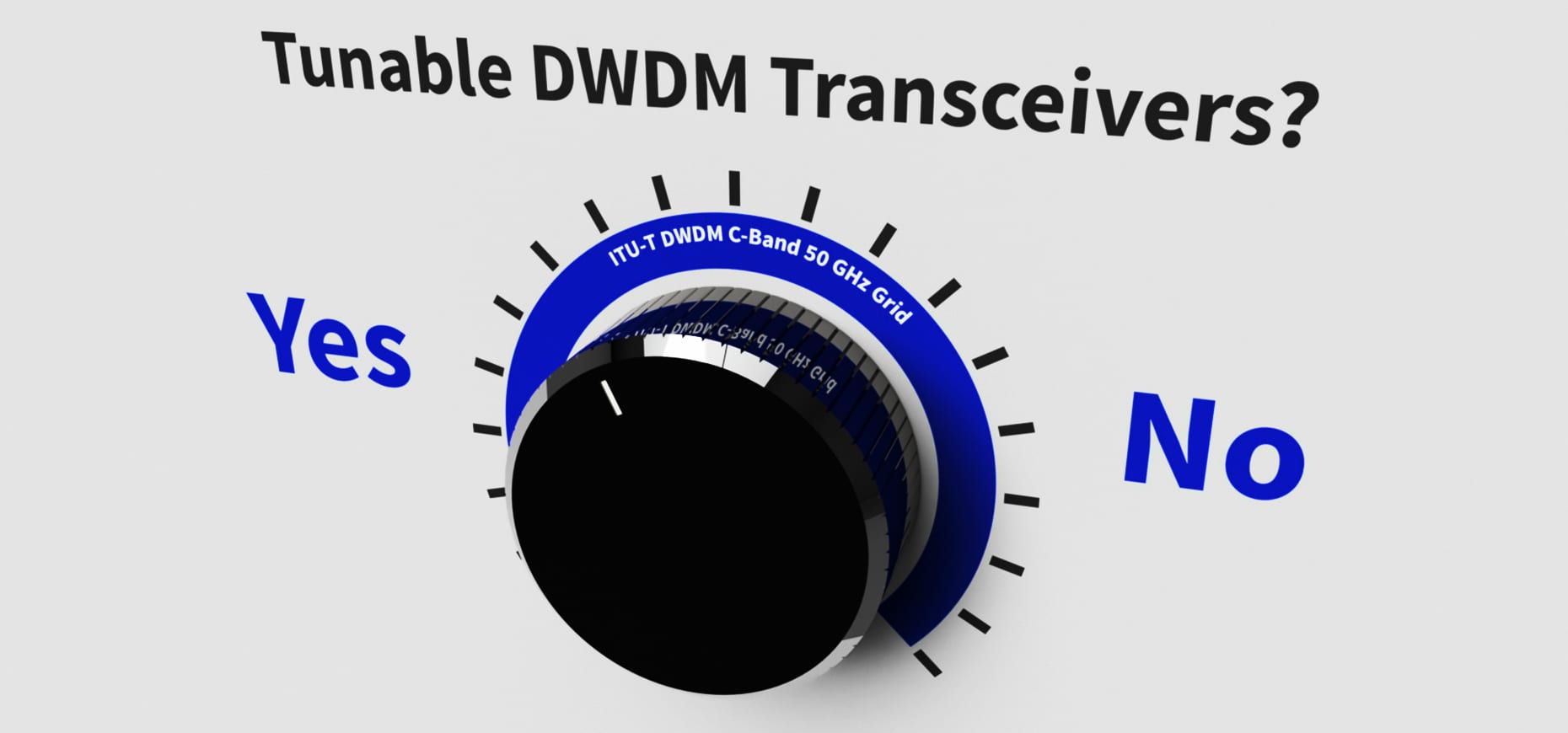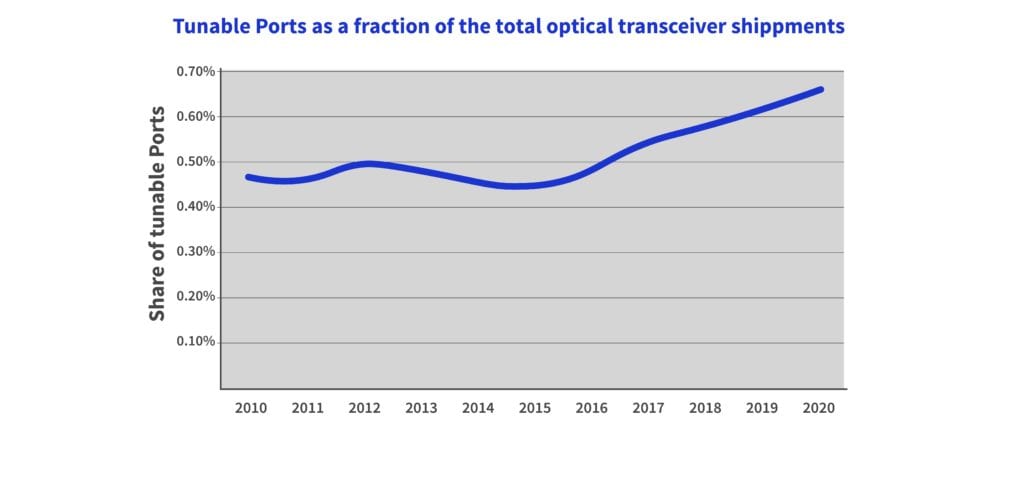
Tunable Optical Transceivers – When To Use?
Already for some time tunable optical transceivers for use in DWDM systems, such as XFP and SFP+ are available for optical networking industry. Current evolution of tunable optical transceivers typically support full ITU-T C-band, allowing dynamically tune transmitter wavelength with 50GHz steps. However, even longer time conventional or fixed wavelength DWDM transceivers are in market. We feel that some of our customers are puzzled about choosing between fixed and tunable optical transceivers. I will try to shed some light on this by expressing my opinion.
What I believed when first heard about tunable optical transceivers? Well, I was thinking that it is revolutionary and that tunable transceivers will be part of future Metro Ethernet and Optical Transport Networks. I was imaging that in ecosystem of Software Defined Networks network intelligence will make decisions about required bandwidths in different directions, will dynamically add or drop some wavelengths and that essential part of that will become tunable optical transceivers. What is reality now, after some years with tunable optics in market?
At first Metro Ethernet. Nowadays metro Ethernet mainly consists of IP nodes, such as switches and routers interconnected by numbers of 10G interfaces. Main use case of DWDM in metro networks is economy of black fiber. Usually operators implement DWDM by using colored transceivers directly in 10G ports and connect to line trough Passive optical multiplexers. These IP nodes focusing on L2/L3 packet processing, but their optical network functionality is quite limited. From currently popular IP platforms, only few actually support tuning of wavelengths by CLI commands.
Then is Optical Transport Networks (OTN) which is focusing on carrying payload and multiplexing, switching and supervising networks in optical Layer 1 domain. Focus of current systems is packaging of payload in most effective transport containers and for Layer 1 management OTN use packages of Wavelength Selective Switches (WSS) called also ROADM (reconfigurable optical add-drop multiplexer), which allow switching wavelengths in multi-direction nodes from ring to ring, branch to branch. WSS/ROADM technologies allow rapid implementations of backup hot standby transport optical routes. But what about tunable optical transceivers in OTN..? Still – mainstream is conventional fixed wavelength DWDM transceivers.
How many optical ports from total implemented actually are with tunable optical transceivers? Hard to say about this research precision, but we found out such graph online, saying that from all optical ports shipped only about 0.5% are tunable and we tend to believe it:

So – what is current use case for tunable optical transceivers? When to consider implementation of all DWDM network based on tunable transceivers? Take in account – tunable transceivers are much more expensive compared to conventional fixed wavelength DWDM transceivers. I see two main applications:
Spare Part – when You running big DWDM network with high number of nodes and let’s say use up to 80 (50GHz spacing) different wavelengths, spare part management quickly could become nightmare. You need to have couple of transceivers of each wavelength and possibly in different locations, as You wish that Your field technicians can access network nodes quickly enough. In this case few tunable modules in place of few hundred fixed ones are very good and cost efficient idea. If Your platform supports in-port tuning it’s excellent – if no, You additionally will need special programming board allow to tune module to necessary wavelength. (As us – we can deliver compatible tunable optical XFP and SFP+ modules and corresponding boards).
Really big transport network with 400G or 1T applications on horizon. Yes, with already now available coherent optical technologies, such as Dual-Polarization Quadrature Phase Shift Keying (DP-QPSK) is possible to fit 100G transmission bandwidth within DWDM 50 GHz channel. So if 100G is too less for you, then future 400G and 1T transmission formats are expected to be bulky and not fit within 50GHz spacing. These future new data rate formats require that channel plan/spacing is flexible, that Your OTN system can adapt to new rates and can re-arrange channel spacing to find place for new rates in it.
Thank You for reading so far – this is just opinion, if You have to add something – always welcome sales@edgeoptic.com.

